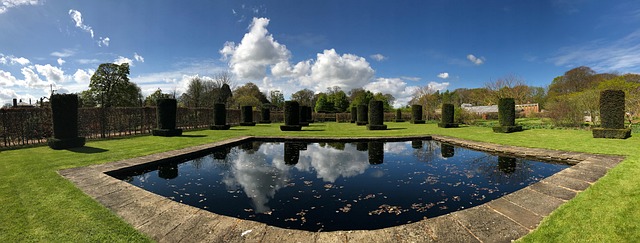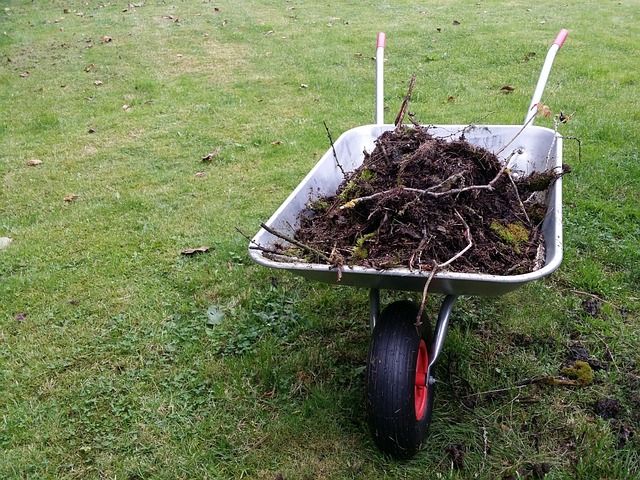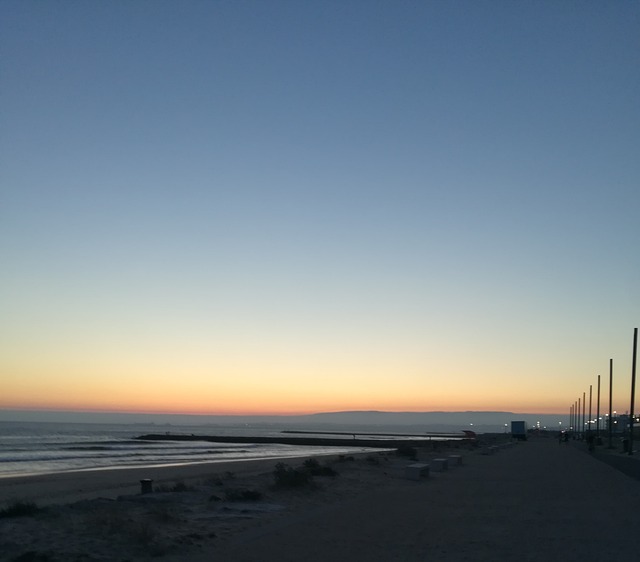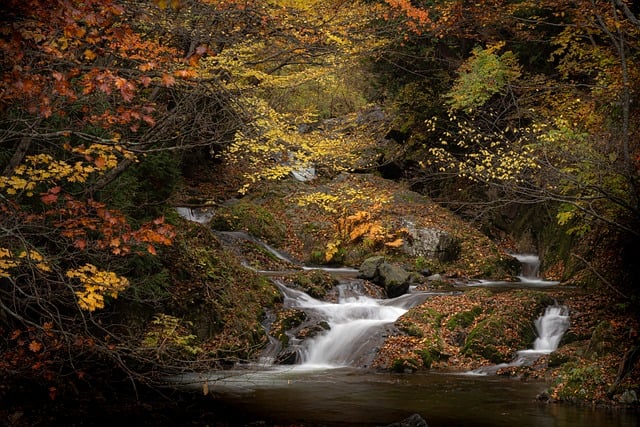Elevate Your Sloped Yard: Trusted Solutions for Dynamic Landscapes
Transforming a challenging sloped yard into an attractive, functional outdoor space is achievable th…….
Introduction
Landscape design is a multifaceted discipline that transcends mere aesthetics, integrating ecological sensitivity, functional space utilization, and artistic expression. When it comes to sloped yards, the challenge intensifies, requiring innovative solutions that harmonize with the natural topography while catering to the property owner’s needs. This comprehensive article delves into the nuances of landscape design for sloped yards, exploring its significance, the global impact, economic considerations, technological advancements, and policy frameworks. We will also examine the challenges faced, present case studies, and speculate on the future prospects of this specialized field. By the end of this exploration, readers will have a robust understanding of how to transform sloped landscapes into functional, beautiful, and sustainable spaces.
Understanding Landscape Design for Sloped Yards
Landscape design for sloped yards is a niche within the broader field of landscape architecture. It involves creating outdoor spaces on inclines or steep terrains that often present unique challenges such as erosion control, drainage issues, and soil stability. The core components of this discipline include plant selection suited to varying moisture levels, retaining walls for soil support, staircase integration for safe access, and hardscaping elements like paths and terraces that maximize usable space.
Historically, landscape design for sloped yards has been informed by the need to adapt to diverse climates and geographies, from the terraced rice paddies of Asia to the Mediterranean gardens that contour with the natural slope. Today, it is a dynamic field influenced by sustainable practices, ecological preservation, and innovative design technologies.
Global Impact and Trends
The impact of landscape design for sloped yards is global, as regions across the world confront the challenge of managing steep land. In areas prone to heavy rainfall, such as parts of Brazil and Japan, terraced landscapes are a critical solution for preventing landslides and promoting agriculture. In contrast, urban centers like San Francisco and Rio de Janeiro grapple with the integration of sloped yards into residential and commercial developments, often incorporating native plant species and xeriscaping to conserve water and reduce maintenance.
Key trends shaping this field include a move towards sustainable practices that minimize environmental impact, the integration of smart technologies for irrigation and lighting, and an emphasis on creating multi-functional spaces that serve both aesthetic and ecological purposes. In regions with limited land availability, sloped yards are being reimagined as community spaces, playgrounds, and even vineyards, demonstrating the versatility and importance of this design discipline.
Economic Considerations
The economic landscape of landscape design for sloped yards is multifaceted. It encompasses residential and commercial projects, each with its own market dynamics and investment patterns. Residential projects often involve higher costs due to specialized labor, materials, and extended construction timelines. However, the value addition to property is significant, as well-designed sloped landscapes can enhance both functionality and aesthetics.
Commercially, this field offers opportunities for innovation in product design, such as modular retaining walls, permeable pavements, and erosion control systems. These products contribute to the broader economic system by creating jobs, stimulating local economies, and promoting sustainable practices that can reduce long-term maintenance costs.
Technological Advancements
Technology has revolutionized landscape design for sloped yards with advancements in geotextiles, hydroseeding, and sustainable irrigation systems. The use of 3D modeling software allows designers to visualize projects before construction begins, ensuring functionality and aesthetic appeal. Drones are increasingly used for site surveying and monitoring, providing high-resolution imagery that aids in the planning process.
In the future, we can expect further integration of smart technologies, such as automated irrigation systems that conserve water based on soil moisture levels and climate data. The Internet of Things (IoT) may also play a role in monitoring environmental conditions and adjusting landscapes accordingly, ensuring resilience against extreme weather events.
Policy and Regulation
Landscape design for sloped yards is governed by a tapestry of policies and regulations that vary by region. These include building codes, zoning laws, and environmental regulations that dictate how land can be used and developed. In areas prone to natural disasters like mudslides or erosion, there are stringent guidelines for soil stabilization and drainage.
Internationally, initiatives like the Sustainable Development Goals (SDGs) influence landscape design, promoting practices that mitigate climate change effects and protect biodiversity. Local and regional planning bodies often incentivize sustainable landscaping through grants and tax breaks, encouraging property owners to invest in eco-friendly solutions for sloped yards.
Challenges and Criticisms
One of the primary challenges in landscape design for sloped yards is managing erosion and ensuring soil stability. Additional hurdles include water runoff management, maintenance concerns, and adhering to environmental regulations. Critics often point out the potential for over-engineering solutions that do not blend seamlessly with the natural environment.
To overcome these issues, designers are turning to bioengineering techniques, such as live staking and wetland restoration, which integrate plant life into soil reinforcement. Collaboration between landscape architects, engineers, and ecologists ensures that designs are both functional and harmonious with the natural landscape.
Future Prospects
The future of landscape design for sloped yards is bright, with a growing emphasis on sustainability, community involvement, and innovative solutions. As urban populations continue to expand, the need for multi-functional landscapes that provide recreational space, reduce heat island effects, and manage stormwater will increase.
Designers are looking to native plants and indigenous landscaping techniques to create resilient, low-maintenance outdoor spaces. The integration of edible landscapes and permaculture principles is also gaining traction, offering opportunities for food production alongside beautiful and functional design elements.
Conclusion
Landscape design for sloped yards represents a critical intersection between human needs, environmental stewardship, and innovative design. By addressing the unique challenges of working with steep terrain, designers are creating outdoor spaces that are both practical and aesthetically pleasing. As we continue to navigate the complexities of climate change, urbanization, and resource management, this field will undoubtedly play a pivotal role in shaping the future of our living environments.
This text provides an overview of the various aspects of landscape design for sloped yards, from its historical context and global impact to economic considerations, technological advancements, policy regulations, challenges, and future prospects. It is designed to inform both professionals in the field and interested laypersons about the importance and intricacies of this specialized area within landscape architecture.

Transforming a challenging sloped yard into an attractive, functional outdoor space is achievable th…….

Strategic landscaping techniques like retaining walls and terraced yards transform challenging slope…….

Strategic landscaping, including strategic lighting, retaining walls, terraces, and erosion control…….

Transforming sloped yards into vibrant oases combines practical erosion control with aesthetic appea…….

Transform your sloped yard into a vibrant hillside oasis with our expert landscaping solutions. From…….

[Company Name] turns sloped yards into vibrant hillside oases through innovative landscaping design……..

Transforming sloped yards into vibrant oases is achievable through creative landscaping ideas like r…….

Transforming challenging slopes into engaging outdoor spaces is made possible with creative landscap…….

Transform your sloped yard into a vibrant, functional outdoor oasis with modern landscape designs. R…….

Transform your challenging sloped yard into a safe, stunning outdoor space with strategic landscapin…….